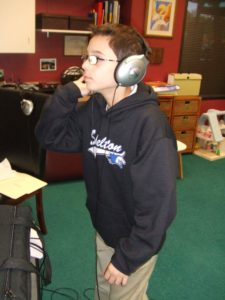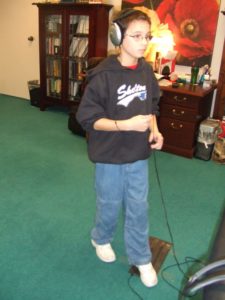Blog
Effective Listening to Improve Apraxia of Speech
Braden’s Story

Braden had limited fibers connecting the two brain hemispheres, resulting in Childhood Verbal Apraxia and causing major disruptions in his ability to communicate verbally in spite of being a very bright child. Braden’s mom called me requesting I use the Interactive Metronome with her son to see if it would help his speech production. https://www.ctsdallas.com/services/therapies/intensive-therapy-programs
Auditory Processing Impacts Oral-Motor Coordination
Childhood Verbal Apraxia
Childhood verbal apraxia is a complicated neurological motor planning disorder disrupting the individual’s ability to form sounds in words and words in sentences fluently on command/ request. It may be present with other language learning problems or it may be the only presenting condition. It often is accompanied by overall body coordination problems. It usually requires oral motor exercises along with significantly more repetition sounds to create words with a much greater time required to develop verbal expression. Speech may always difficult to produce across the life span and other means of communication may need to be utilized by some individuals.
Auditory Processing Underlying Childhood Verbal Apraxia
While it is not easy to diagnose auditory processing deficits with individuals having verbal apraxia because of their distorted speech, sometimes I have been able to utilize pointing to pictures as a way of determining word discrimination in quiet versus noisy environments. Disruptions in auditory processing and discrimination are frequent and usually severe with individuals having this condition. I had always addressed the speech production issues separately from the language issues with individuals presenting childhood verbal apraxia, which is the traditional way of treating verbal apraxia. Then Braden came to me and my paradigm shifted to use a multiple sensory approach.
Interactive Metronome Improved Movement, Listening and Verbal Skills
Braden came to me as a twelve year boy with overall motor coordination issues as well as verbal apraxia, sensory integration dysfunction, visual perceptual disorder and attention deficit disorder. When his mother called me requesting I use the Interactive Metronome, I had only received certification about five months before and had only used it with about 5-6 people. I was unsure whether it would make any difference in his performance, but she begged me to allow him to try it based on some research that she had found about using Interactive Metronome for speech production.
Communication Worsened Before it Improved
Braden went through a two week therapy intensive (ten sessions in two weeks) in December using just Interactive Metronome. Four days into his treatment program his already limited speech became more challenging. He could no longer speak in 3-4 word sentences, but only 1-2 word combinations. I requested his mother call his neurologist who insisted we continue the program as “it was making changes” and he was “only clapping his hands and tapping his feet. Nothing he was doing could be harming him.” Sensory integration therapists often will comment that “you frequently get disorganization before you get reorganization.” That was just before the weekend break. Three days later when Braden returned for his next session on Monday, not only was he speaking in longer sentences, but his speech production was clearer! He continued to make progress in speech production for the remaining five days. His parents decided to continue ongoing therapy after the winter break to see if progress would continue.

Braden received two weekly sessions of speech therapy for the next nine months which included tongue and lip exercises along with other traditional speech therapy for verbal apraxia. He also participated in activities targeting breathing, balance, movement for brain activation, CranioSacral Therapy, and auditory processing with a phonemic awareness and auditory discrimination emphasis https://www.ctsdallas.com/services/therapies/craniosacral-therapy/
Additional Therapy Targeted Multiple Sensory Systems
Second Intensive Program Produced More Improvements
In July of the same year, Braden participated in another two week (ten sessions in two weeks) of intensive therapy, this time using both the Interactive Metronome and The Listening Program with bone conduction delivery. https://www.ctsdallas.com/services/therapies/intensive-therapy-programs Additional improvements were seen in Braden’s sentence length and complexity as well as his pronouncing multiple syllable words with greater ease.
Improvements in Academic Performance and Speech
Not a novice to treatment, Braden had received occupational therapy and speech therapy at his private school for learning disabilities for several years; however, as he addressed his underlying auditory processing and executive function deficits he saw dramatic improvements in his academic performance, his daily life and maturity as well as his speech. His mother reported in May of that same year, just prior the second therapy intensive a list of changes she had noticed. This information was collected on a solicited checklist I use to document progress:
- Increase in eye contact
- More emotional
- More animated
- More responsible
- More independent
- Decrease in frustration
- Increase in sense of humor
- Less restless
- Increase in physical coordination
- Increase in sense of rhythm
- Less confusion of left and right on self
- Change in sleep patterns
- Increase in talking/ communication
- Increase in vocabulary
- Increase in phonological awareness
- Increase in sentence structure
- Increase initiating verbal participation
- Increase in speaking quality
- Increase in reading comprehension
- Increase in ability to tell a story
- Increase in on task performance
Improvements Seen in Numerous Areas
His mother noted in the comments section that Bradon’s language teacher at school “has started him on hard, more complex thinking stories. She didn’t know if he was ready, but to her surprise, he did great and was the best in the group.”
His mother further reported that he was able to do more complicated computer tasks at home and had been staying at home alone while his parents walk. He had always been too afraid to do that in the past. He had tried more new food lately as well. His mother also reported that his overall “level of understanding concepts has improved and he seems to have grown up in the past few months.” https://www.ctsdallas.com/services/therapies/intensive-therapy-programs
